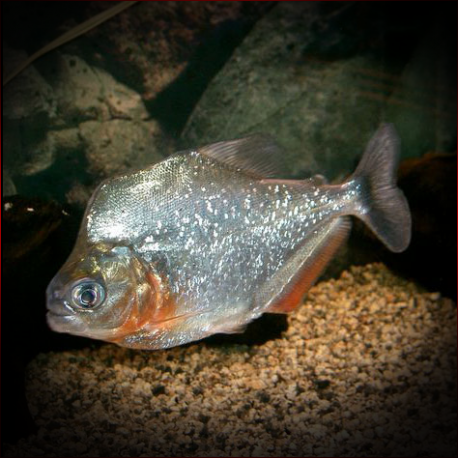More info
Datasheet
| Minimum Tank Size | 255 litres / 67.36 US gallons |
| Maximum Size | 19.1cm / 7.52inches |
| Temperature | 24°C / 75.20°F - 28°C / 82.40°F |
| Hardness | 5-15ºdH |
| pH | 6.5-7.5 |
General Description
There are currently 24 described species of Serrasalmus, with Serrasalmus Serrulatus being one of them, though it is difficult to positively identify due to its close resemblance to other congeners. These fish are not true piranhas but fall under the Serrasalmidae family. They are not recommended as tank mates due to their solitary nature and tendency to fight if kept together.
Aquarium Setup
Best suited to a planted tank with ample shaded areas and a naturalistic setup featuring roots, branches, floating vegetation, and dark substrate. Water quality must be meticulously maintained, with a moderate flow preferred. External filtration, heater guards, and weekly partial water changes are essential for their well-being.
Behaviour
Serrasalmus Serrulatus should be kept as solitary specimens due to their aggressive tendencies towards conspecifics. While not inherently hostile, they may bite if threatened and exhibit skittish behavior if their environment does not cater to their specialist needs. These fish can live over ten years and become less active as they mature.
Feeding and Diet
In the wild, they feed on fins of other species and smaller fish. In captivity, they can be weaned onto dead foods, and as juveniles, they enjoy live or frozen bloodworms, Tubifex, Artemia, prawns, and similar items. Adults require larger prey like mussels, prawns, squid, and earthworms, fed two to three times a week. Avoid feeding mammalian/avian meat or feeder fish to prevent health issues.
Reproduction & Dimorphism
Reproduction of Serrasalmus Serrulatus, like most of the genus, has not been observed in captivity. Information on sexual dimorphism is unavailable, and further research is needed to understand their breeding habits.
Habitat and Distribution
The exact habitat of Serrasalmus Serrulatus is unknown, but similar species prefer rivers, pools, and creeks with dense vegetation. Reports suggest their presence in Peru, western Brazil, and Argentina, although the accuracy of this distribution is uncertain.

